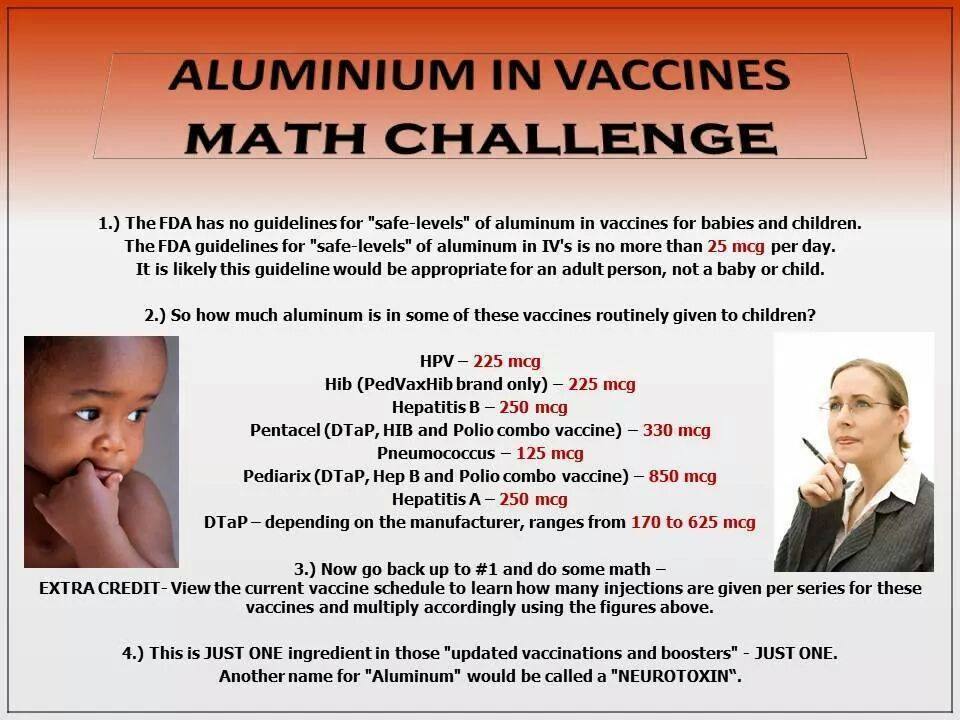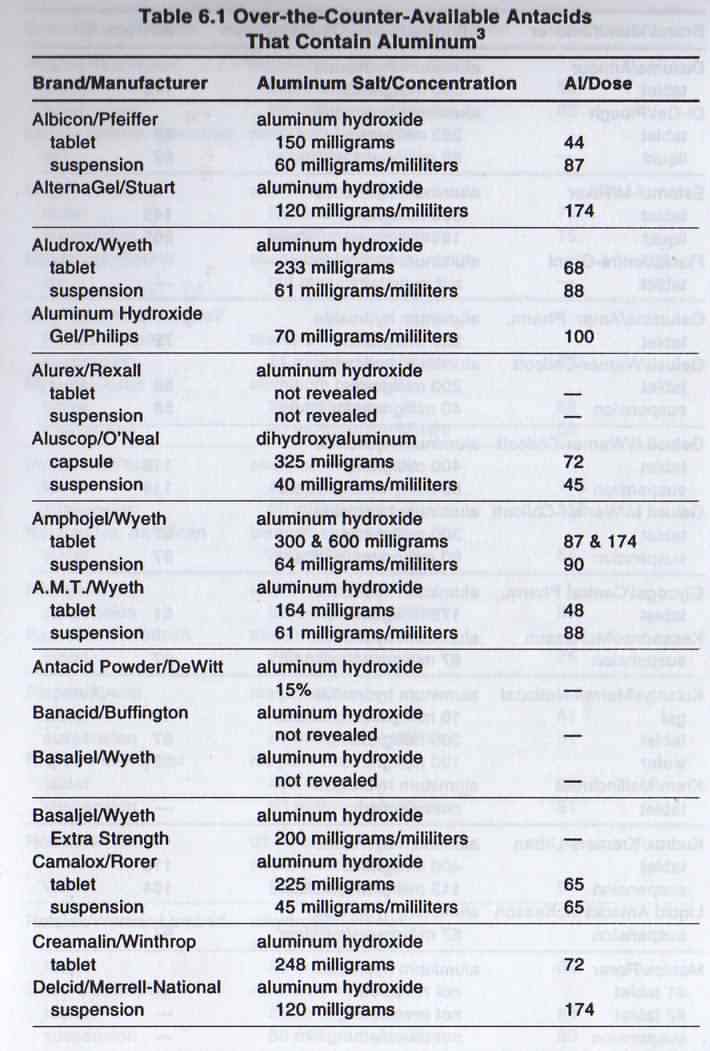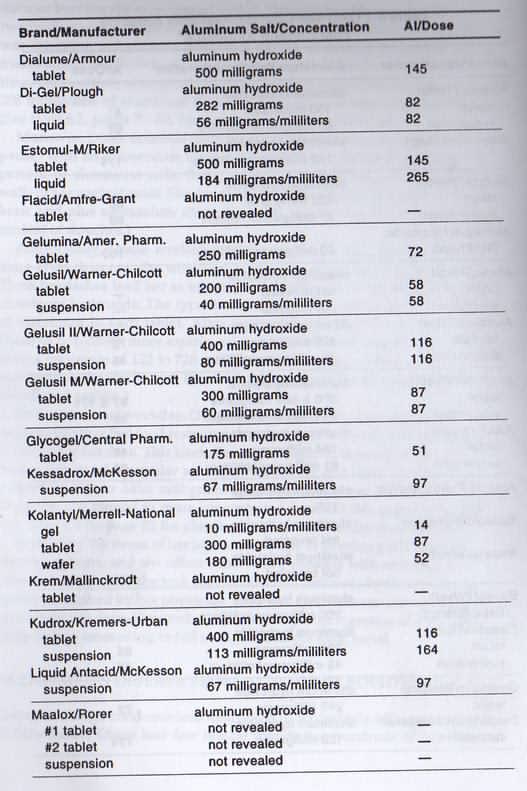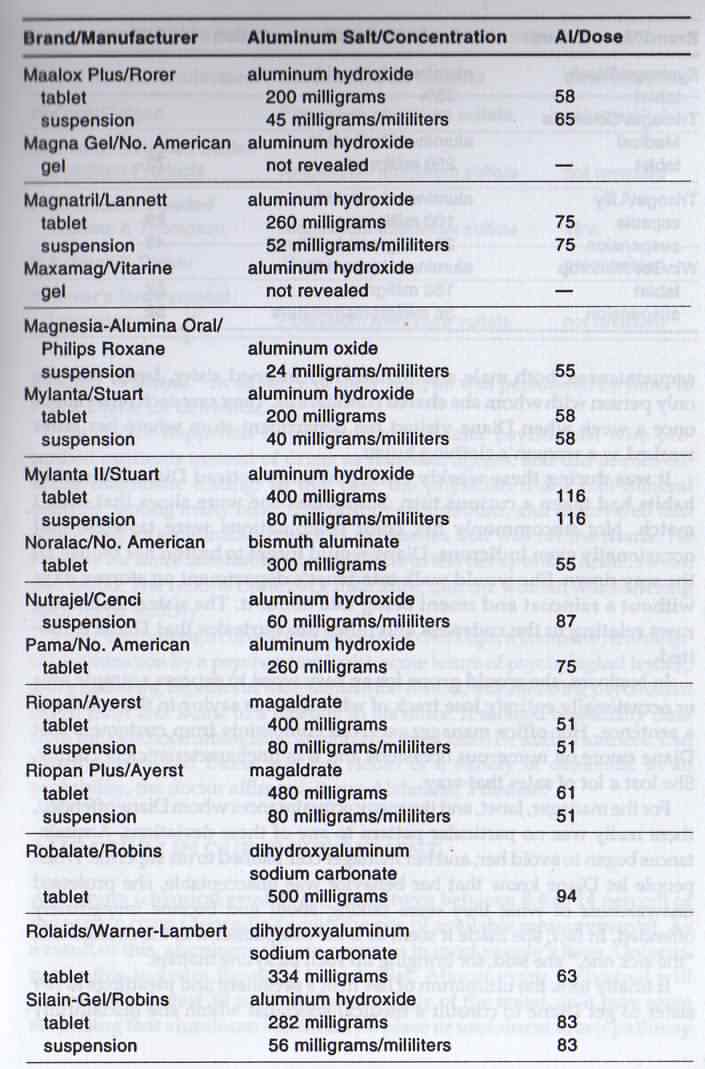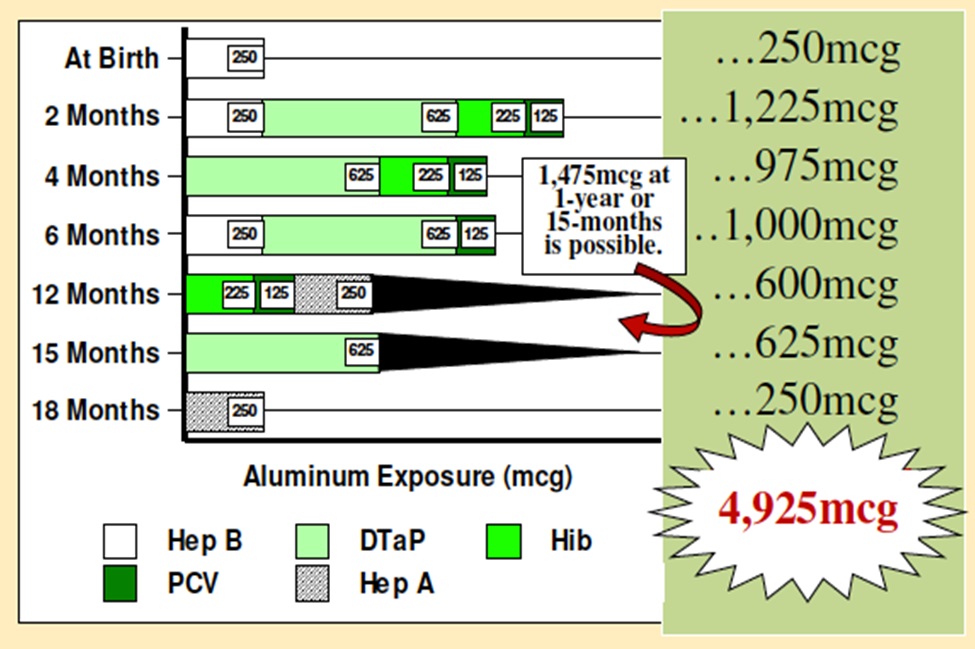
Aluminium levels in drugs (quotes & banners)
Aluminium
[Safety levels are set by Industry run/controlled Environmental Protection Agency (EPA)]
See: Over-the-Counter Antacids that contain Aluminium Mercury levels in drugs
Babies that follow the recommended immunization schedule receive nearly
5000mcg (5mg!) of aluminum by 18 months of age. (Since some shot dates are
variable, babies may receive up to 1,4 75mcg of aluminum at their 12-month or
15-month checkups!) Source: Product inserts and the CDC' s immunization
schedule, 2010.
The Centers for Disease Control and Prevention (CDC) and the
World Health Organization (WHO) are aware that aluminum is dangerous. For
example, in June 2000, Dr. Tom Verstraeten, CDC epidemiologist, made the
following comment to a group of concerned scientists: "The results [for
aluminum] were almost identical to ethylmercury because the amount of aluminum
[in vaccines] goes along almost exactly with the mercury." He was referring
to a landmark study that found "statistically significant relationships" between
both aluminum and mercury in vaccines and neuro-developmental delays. Dr. John
Clements, WHO vaccine advisor, provided another telling statement: "Aluminum
is not perceived, I believe, by the public as a dangerous metal. Therefore, we
are in a much more comfortable wicket in terms of defending its presence in
vaccines. " [2010] MAKE an INFORMED
VACCINE DECISION by Mayer Eisenstein, MD, JD, MPH (with Neil Miller) p. 206
The FDA is also aware that aluminum is dangerous. In a critical document on
drug evaluation, the following statement is made:
"Research indicates that patients with impaired kidney
function, including premature neonates, who receive [injections] of aluminum at
greater than 4 to 5mcg per kilogram of body weight per day, accumulate aluminum
at levels associated with central nervous system and bone toxicity. Tissue
loading may occur at even lower rates. " —FDA document
This means that for a 6 pound baby, 1 l-14mcg would be toxic.
The hepatitis B vaccine given at birth contains 250mcg of aluminum—20 times
higher than safety levels! Babies weigh about 12 pounds (5.5kg) at two
months of age when they receive l,225mcg of aluminum from their vaccines—50
times higher than safety levels!
Of course, healthy babies without impaired kidney function
may be able to handle more aluminum. However, no one knows how much more because
such studies were never conducted. In addition, babies are not screened for
kidney strength prior to vaccination. Therefore, it's impossible to know ahead
of time which babies will succumb to aluminum poisoning. Instead, parents are
expected to play Russian Roulette with their children (see table). Aluminum-free
vaccines are a safer alternative. [2010]
MAKE an INFORMED VACCINE DECISION by Mayer Eisenstein, MD, JD, MPH (with Neil
Miller) p207
A 12-pound,
two-month-old baby could safely receive at least 30 mcg of aluminum per day. A
22-pound one-year-old could receive at least 50 mcg safely.....
........a newborn who gets a Hepatitis B injection on
day one of life would receive 250 mcg of aluminum. This would be repeated at one
month with the next Hep B shot. When, at two months, a baby gets its first big
round of shots, the total dose of aluminum could vary from 295 mcg (if a
non-aluminum HIB and
the lowest-aluminum brand of DTaP are used) to a whopping 1,225 mcg (if the Hep B
vaccine is given along with the brands with the highest aluminum contents). If
the Pentacel combo vaccine is given along with the Hep B and Pneumococcus
vaccines, the total aluminum dose could be as high as 1,875 mcg. These doses are
repeated at four and six months. With most subsequent rounds of shots, a child
would continue to get some aluminum throughout the first two years.
But the FDA
recommends that premature babies, and anyone with impaired kidney function,
receive no more than 10 to 25 mcg of injected aluminum at any one time.
As a medical doctor, my first instinct was to worry that these aluminum
levels far exceed what may be safe for babies. My second instinct was to assume
that the issue had been properly researched, and that studies had been done on
healthy infants to determine their ability to rapidly excrete aluminum. My third
instinct was to search for these studies. So far, I have found none.......I can find no references in FDA documents that
show that using aluminum in vaccines has been tested and found to be safe.
.........The toxic threshold of aluminum in the bloodstream may be lower than 100
mcg per liter. The buildup of aluminum in tissues has been seen even in
patients with healthy kidneys who receive IV solutions containing aluminum over
extended periods.
[2008] Is Aluminum the New Thimerosal? By Robert W.
Sears
Aluminum Toxicity: A misdiagnosed epidemic
(Part 1) By Ingri Cassel But the amount of aluminum being injected into infants as recommended by the
Advisory Committee on Immunization Practices is a jaw dropper.
The average birth
weight for a baby is 7.4 lbs. (3.4 kg.) They receive soon after birth a
hepatitis B vaccine that, ....... contains 500 mcg. of aluminum or 147 mcg. of aluminum per kg. of
body weight. If the Energix vaccine from GlaxoSmithKline is administered, the
pediatric dose is 250 mcg. of aluminum as aluminum hydroxide totaling 73.5 mcg.
of aluminum per kg. of body weight.
The amount of time for these doses of aluminum to be eliminated by an
infant’s immature kidneys is unknown, as is the time it takes for aluminum to
transfer from muscular tissue to the bloodstream and, ultimately, into the
brain. Meanwhile, the infant is continually dosed with aluminum through infant
formula, and even in breastmilk but to a lesser degree.
The average baby visiting their pediatrician for the two-month, well-baby
checkup weighs 9.25 lbs. (4.2 kg.) and could receive as much as 1,475 mcg. of
injected aluminum within 30 min. or 351 mcg. of aluminum per kg. of body weight.
The breakdown of vaccines the pediatrician is supposed to administer follows:
Hep B (250 to 500 mcg Al); Rotateq® (oral); DTaP (Infanrix® - 625 mcg Al and
DAPTACEL® - 330 mcg Al); PCV - pneumococcal vaccine with 8 antigens (125 mcg.
Al); Hib – haemophilus influenza type b (225 mcg. Al) and; IPV – inactivated
polio vaccine. Then, at four and six months of age, the bolus doses of aluminum continue to
be injected.
Because a newborn's body contains about a liter (300 milliliters) of blood, more than 30 mcg of aluminum floating around in the bloodstream could be toxic if the baby's kidneys aren't working well. The body of a toddler or preschool-age child contains about 1 liter of blood, so more than 100 mcg in his system could be toxic—and, as we've seen, babies can receive more than 1,000 mcg of injected aluminum all at one time........ No one has measured the levels of aluminum absorption by the bloodstream when it is injected into the skin and muscle of infants, or the levels of excretion from the body via urination. All of the FDA and AAP documents that I've read state that aluminum might be a problem, but that they haven't studied it yet, so we should limit the amount of aluminum included in injectable solutions. But, again, no one is talking about the levels of aluminum in vaccines. [2008] Is Aluminum the New Thimerosal? By Robert W. Sears

.jpg)
[2014]
Current Levels of Aluminum in the Childhood Vaccines
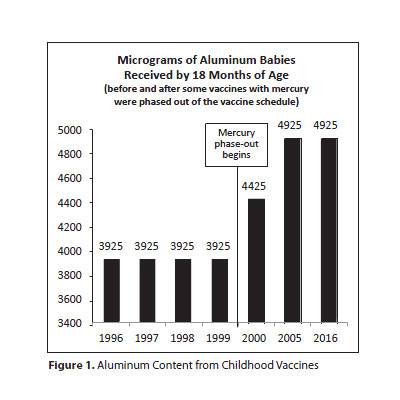
[pdf 2016 Dec] Aluminum in Childhood Vaccines Is Unsafe by Neil Z. Miller
.jpg)
[2014]
Current Levels of Aluminum in the Childhood Vaccines
